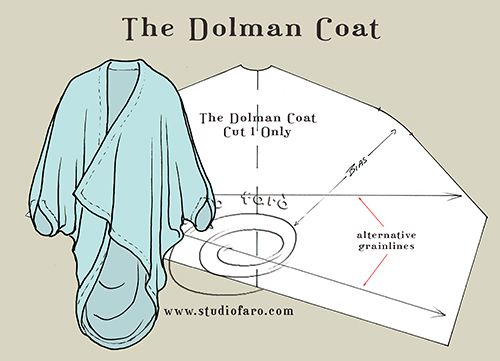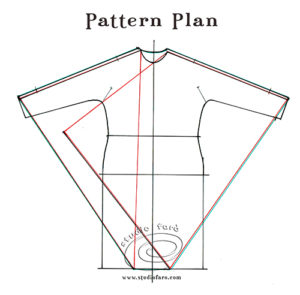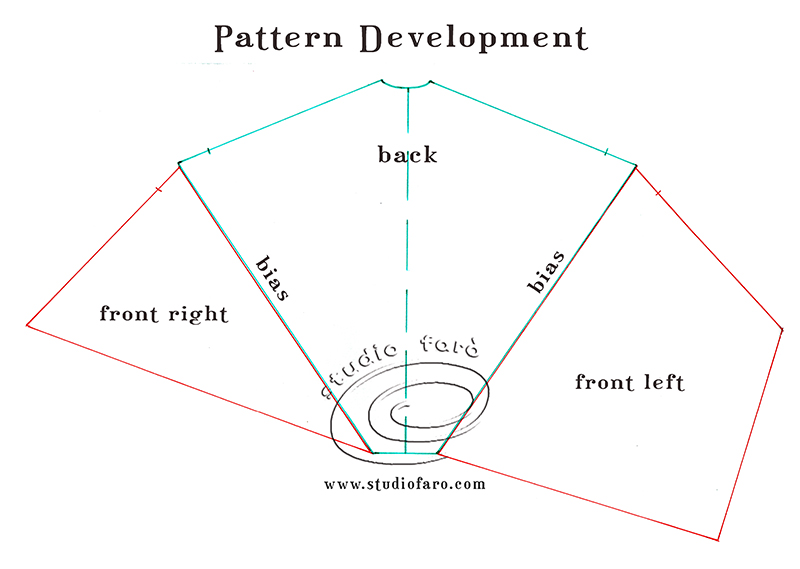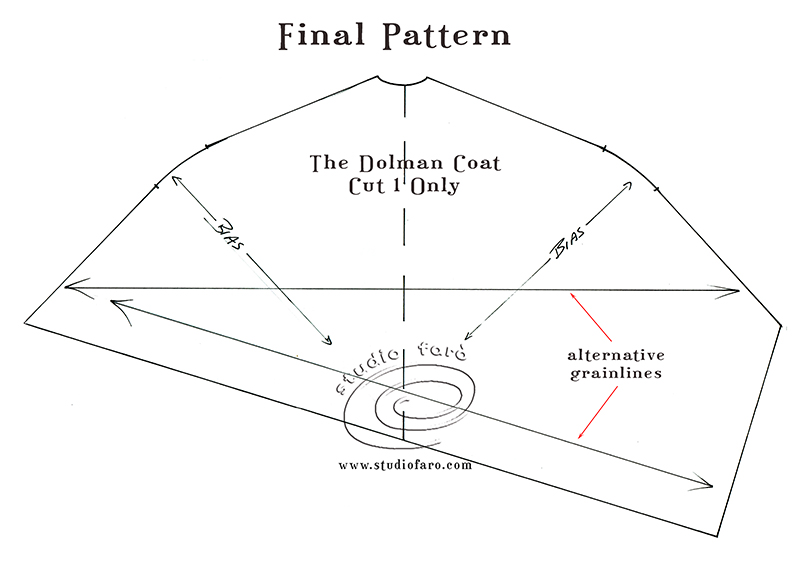15 Sep The Dolman Coat
So many fans dropped by on Saturday to work on our #PatternPuzzle, the conversation went on for most of the day. And it seems it is the anonymous pattern shapes that cause the greatest dilemma. After all, they could be almost anything.

It’s warm and cuddly, and it’s reminiscent of the 1920’s, and Paul Poiret. The Dolman Coat is based on a woven kimono block and the dolman feature is specific to the drape in the underarm area that reaches from the hem of the coat to the wrist.
-
- From wikipedia – ‘A dolman sleeve is a sleeve set into a very low armscye; in fact, the armscye may extend to the waistline, in which case there will be no underarm seam in the blouse.’
- From the dictionary – ‘A kind of sleeve for a coat or dress, tapering from a wide opening at the armhole to a narrow one at the wrist.’
Traced out below is my knit kimono block, front and back together, laid out as a full pattern for this asymmetric design. Please note the important 1cm difference between the front and the back on the shoulder/overarm seam. To maintain balance in this simple shape it is essential that the back is higher than the front by 1cm. Without it, your garment will always lift in the front and drag towards the back.
Mark in the lines connecting the front neck to hem on the right side of the garment and the sleeves to the hemline, both sides. Please note the hemline is marked as very narrow to create tension in the front line of the garment. The shape on the left side of the garment is a wrap with a near right angle at the waist level. Mark a sleeve opening back along the overarm seam – approx. 14-15cm (5 1/2-6″).

Trace out the back pattern shape, noting the CB line as a grainline reference. Trace out the front right and left pattern pieces and add them to the back pattern to make one large pattern. There is an advantage in placing the underarm line on the bias grain of the cloth. If this pattern ends up too big for the cloth, a CB seam is very acceptable.

Trace the entire pattern, cleaning up the hemline/front edge of the coat to a straight line. Smooth the point in the sleeve openings to a curve, between the notches. This should make a more attractive sleeve opening.
Please note the alternate grain lines suggested on the pattern. If the grain runs at a right angle to the CB line then the underarm area (dolman) is on the bias grain for the best drape. However, if you need to reduce waste in your fabric usage, you can place the grainline parallel to the hemline/front edge. This will allow better interlocking of other sizes in the cutting layout.

The finish on the sleeve openings needs an open seam for the overarm that will fold back and lead into a hem for the sleeve openings. The finish for the neckline and outside edge of the jacket would be a narrow self-facing. If possible, this coat would look great cut in a double face fabric using a self-bind finish for the outside edge.
Hope you enjoy the post and let me know if you have any questions through the comments section below. If you’d like to buy a copy of these pattern making notes for your own personal use at home you’ll find them here: The Dolman Coat – Pattern Making Instructions.
Enjoy 🙂


No Comments